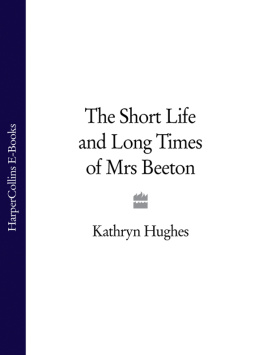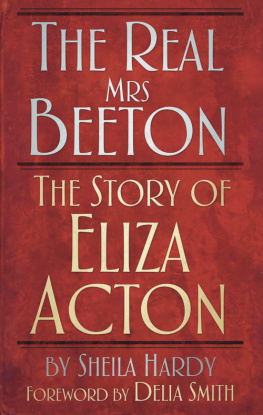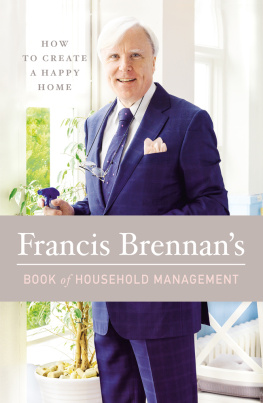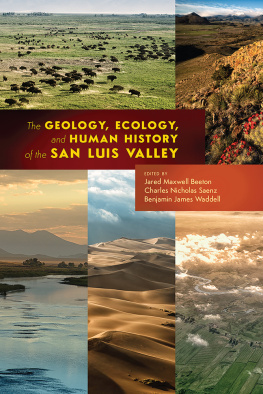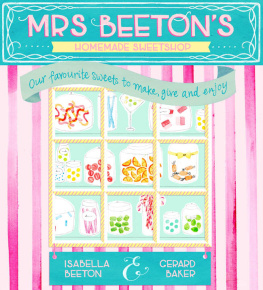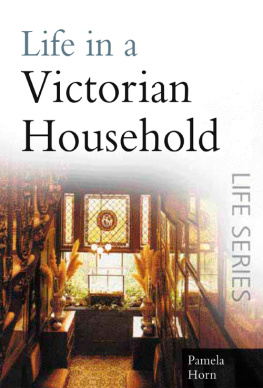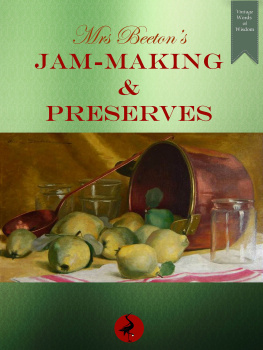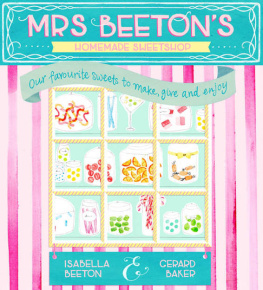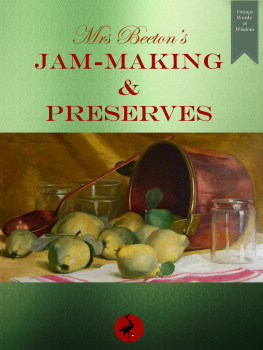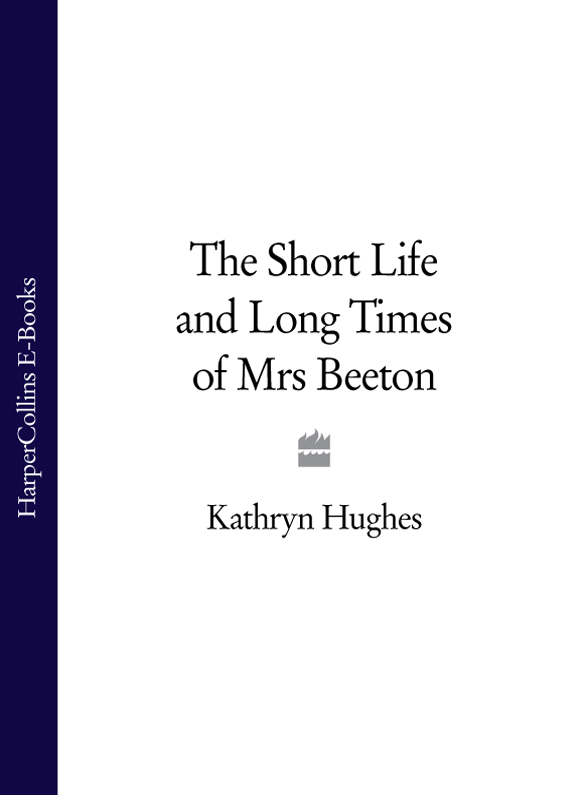
For my parents, Anne and John Hughes
Again, again


PROLOGUE
A Tub-Like Lady in Black
ON BOXING DAY 1932 the National Portrait Gallery opened an exhibition of its new acquisitions to the public. There were twenty-three likenesses on display, all of which were to be added to the nations permanent portrait collection of the great and the good. Cecil Rhodes, South African Statesman, Imperialist and millionaire, was one of the new arrivals, as was the Marquis of Curzon, who had until recently been Conservative Foreign Secretary. By way of political balance there was also a portrait of James Keir Hardie, the first leader of the Labour Party in the House of Commons, and a replica of Winterhalters magnificent portrait of the Duchess of Kent, Queen Victorias mother. Oddly out of place among the confident new arrivals, all oily swirls, ermine, and purposeful stares, was a small hand-tinted photograph of a young woman dressed in the fashion of nearly a hundred years ago. She had a heavy helmet of dark hair, a veritable fuss of brooch, handkerchief, neck chain, and shawl, and the fixed expression of someone who has been told they must not move for fear of ruining everything. The caption beneath her announced that here was Isabella Mary Mayson, Mrs Beeton (183665), journalist and author of the famous Book of Household Management.
By the time the first members of the public filed past the photograph of Mrs Beeton on Boxing Day, her biographical details had already changed several times. Sir Mayson Beeton, who had presented the photograph of his mother to the nation nine months earlier, had insisted on an exhausting number of tweaks and fiddles to the outline of her life that would be held on record by the gallery. Even so, Beeton was still disappointed when he attended the exhibitions private view a few days before Christmas. Particularly vexing was the way that the text beneath his mothers photograph described her as a journalist. Beeton immediately fired off a letter to the curator, G. K. Adams, suggesting that the wording should be altered to Wife of S. O. Beeton, editor-publisher, with whom she worked and with the help of whose editorial guidance and inspiration she wrote her famous BOOK OF HOUSEHOLD MANAGEMENT devoting to it four years of incessant labour 18571861 a huge amount of material to cram onto a little card. The reason Sir Mayson wanted this change, explained Adams wearily to his boss H. M. Hake, director of the gallery, was that he said his father was an industrious publisher with a pioneer mind, who edited all his own publications, and but for him it is extremely unlikely that Mrs Beeton would have done any writing at all.
Mayson Beeton was by now 67 and getting particular in his ways. Even so, he had every reason to fuss over exactly how his parents were posthumously presented to the nation. Over the six decades since their deaths Isabella and Samuel Beeton had all but disappeared from public consciousness. The Book of Household Management was in everyones kitchen, but most people, if they bothered to think about Mrs Beeton at all, assumed that she was a made-up person, a publishers ploy rather than an actual historical figure. Almost worse, from Mayson Beetons point of view, was that virtually no one realized that it was Mr, rather than Mrs, Beeton who had coaxed the famous book into being. Its original name, after all, had been Beetons Book of Household Management and there was no doubt about which Beeton was being referred to.
Getting the presentation of his parents just right had become an obsession with Mayson Beeton, whose birth in 1865 had been the occasion of his mothers death. Only the previous year an article had appeared in the Manchester Guardian that managed to muddle up Mrs Beeton with Eliza Acton, a cookery writer from a slightly earlier period. Beetons inevitable letter pointing out the error was duly published, and from these small beginnings interest in the real identity and history of Mrs Beeton had begun to bubble. In February 1932 Florence White, an authority on British food, had written a gushy piece in The Times entitled The Real Mrs Beeton which drew on information provided by Sir Mayson to paint a picture of a lovely girl who enjoyed the advantages of YOUTH, BEAUTY, AND BRAINS. Mrs Beeton, it transpired, was a real person albeit a rather two-dimensional one after all.
H. M. Hake had happened to read Whites piece in The Times and was struck by her reference to the family owning portraits of Mrs Beeton and wondered if there might be something suitable to hang in the National Portrait Gallery. The answer, when it came back, was disappointing. There was no portrait of Mrs Beeton, just a black and white albumen print, taken by one of the first generation of High Street photographers, probably in the early summer of 1855 when she was 19 years old. It had subsequently been hand-tinted by one of Sir Maysons daughters, giving it a cheap, chalky finish. This was not the kind of flotsam that the National Portrait Gallery usually bothered itself with. Still, the times were changing and it was important to change with them. After a consultative meeting on 7 April 1932 the trustees decided that they were prepared to accept, for the first time in their history, a photographic portrait to hang among their splendid oils and marble busts.
That the trustees of the National Portrait Gallery decided to hang Mrs Beeton on their walls at all says something about changing attitudes to the recent past. During the twenty-five years following the old Queens death, the Victorians had seemed like the sort of people to keep your distance from. Indeed, Whites article in The Times had begun: Mrs Beeton lived in the Victorian era, which, as everyone under 30 knows, was dismally frumpish. It was lovely to be free of that mutton-chopped certainty, hideous building, starchy protocol, and, of course, endless suet pudding. But as the years went by, what had once seemed oppressively close now became intriguingly quaint and people began to wonder about the names and faces that had formed the background chatter to their childhood. When Hake had written to the assistant editor of The Times asking to be put in contact with the Beeton family, he explained why he thought the time might be right for the National Portrait Gallery to acquire a portrait of Mrs Beeton: Recently we were bequeathed a portrait of Bradshaw, the originator of the Railway Guide, and I think that Mrs Beeton is at least a parallel case.
Mayson Beeton would not have been pleased to hear Hake casually lumping his mother into a category of kitsch, brand-name Victorians. But then, he had never quite realized how lucky it was that some years previously Lytton Strachey, that arch pricker of Victorian pomposity, had abandoned his attempt to write a biography of Mrs Beeton. Strachey had been apt to tell friends that he imagined Mrs Beeton as a small tub-like lady in black rather severe of aspect, strongly resembling Queen Victoria, which sounds as if he was lining her up for the kind of robust debunking delivered to Florence Nightingale and others in his Eminent Victorians of 1918. In the end Strachey had given up on his plans to write about Mrs Beeton because he could not find enough material, a continuing lack that explains why there have been so few biographies in total, and none at all since 1977.
Next page
